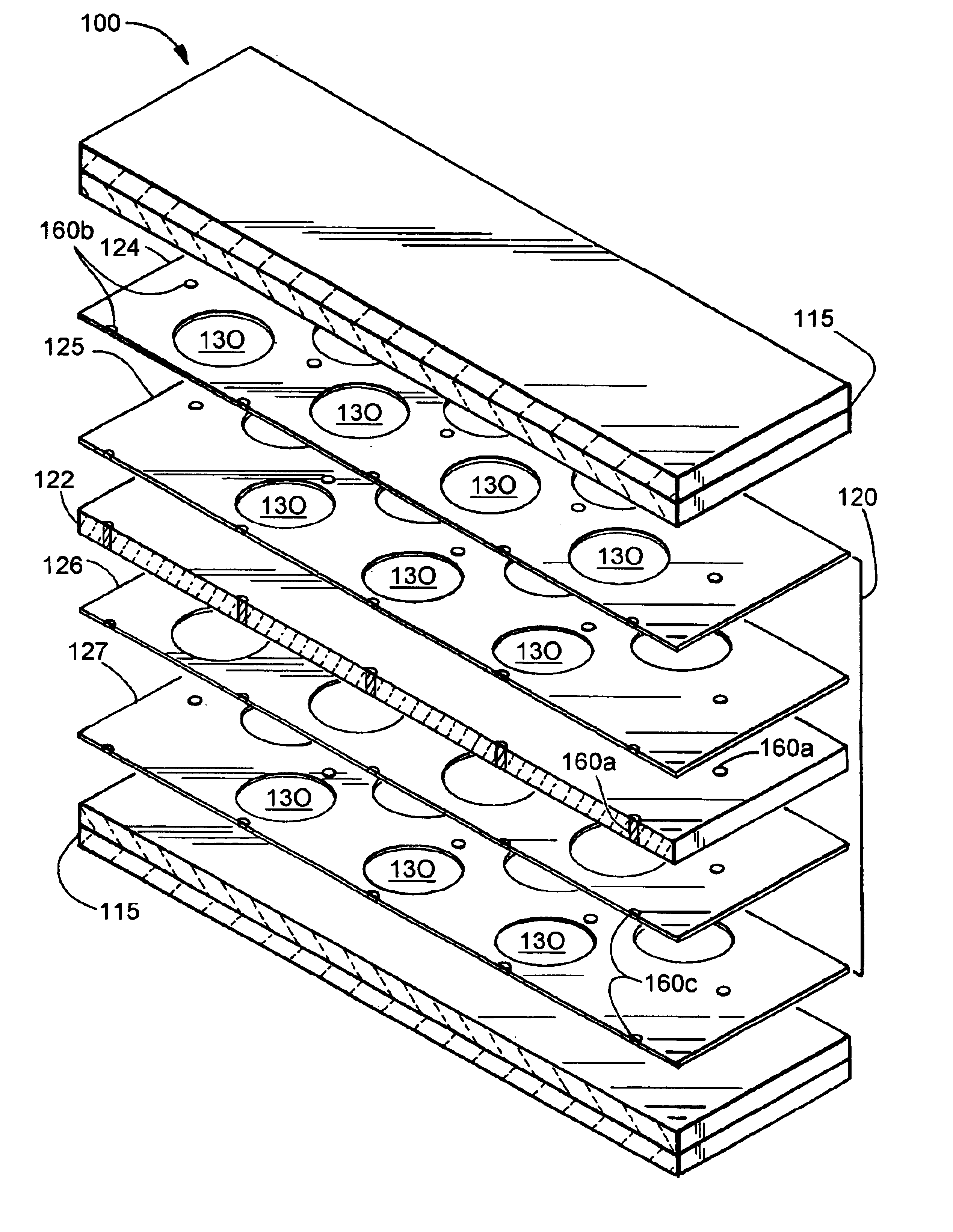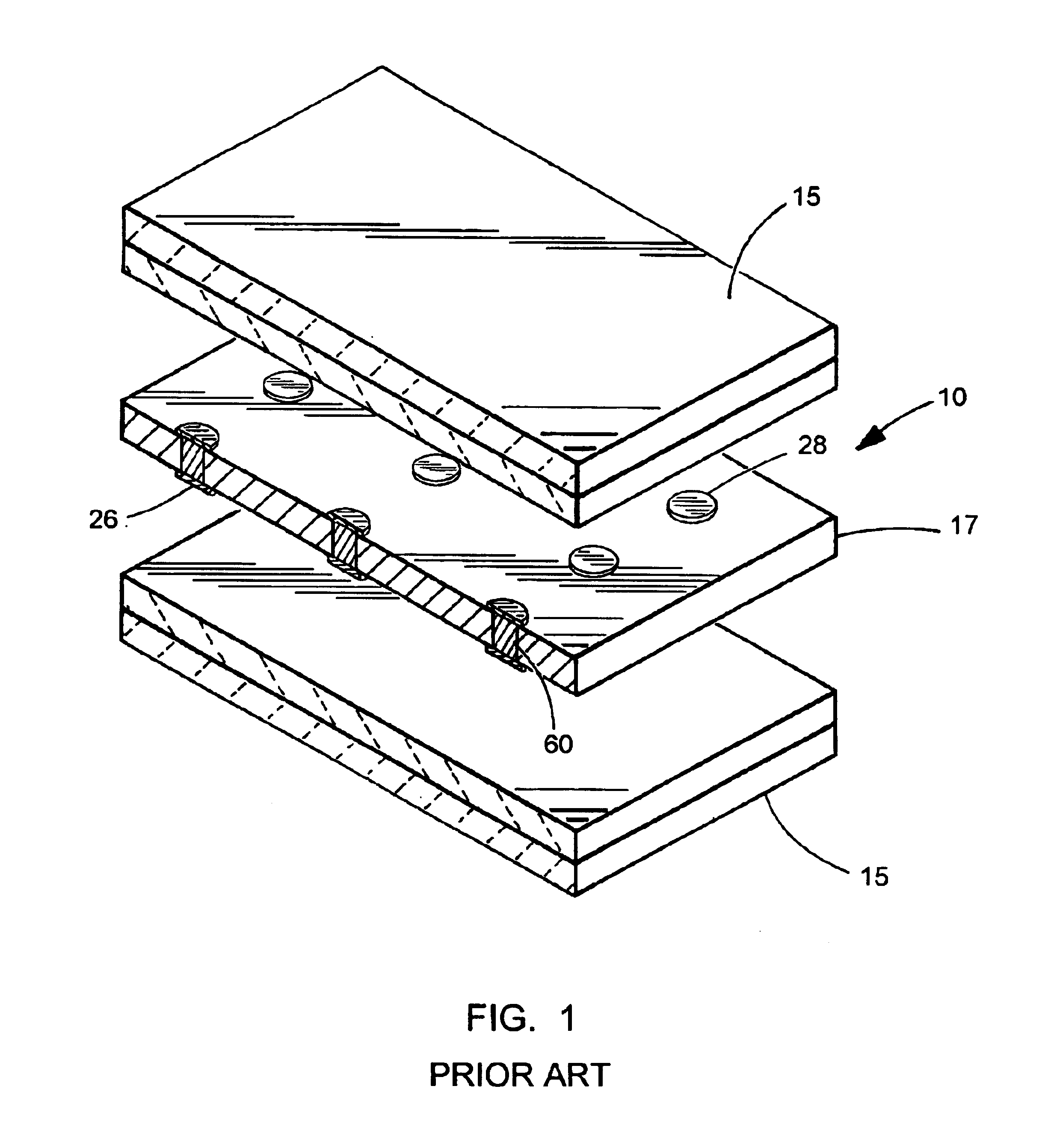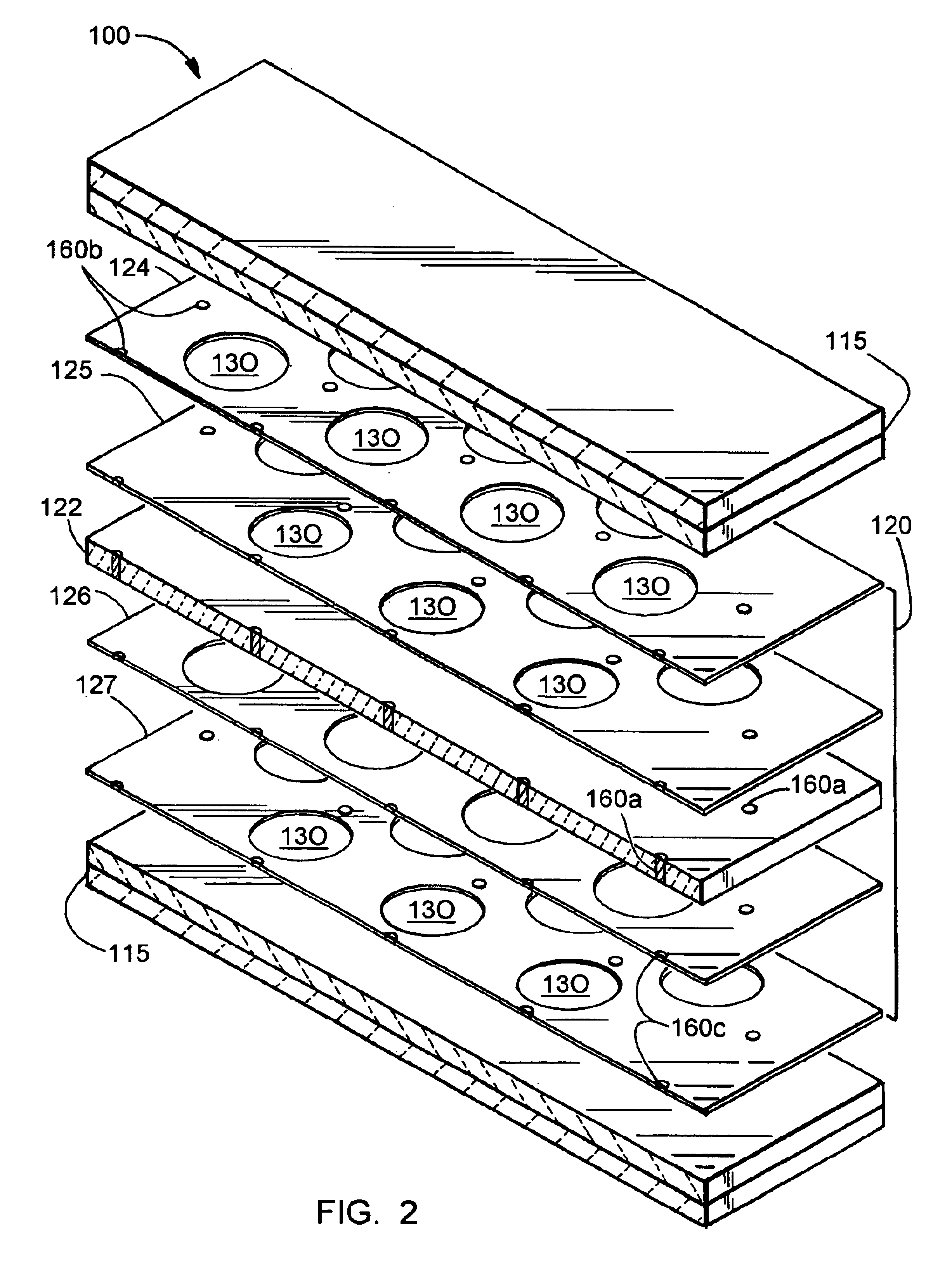High performance ceramic fuel cell interconnect with integrated flowpaths and method for making same
a fuel cell and flow path technology, applied in the field of multi-layer ceramic interconnection, can solve the problems of excess fuel usage, poor stack efficiency, and increased demand for distributed generation systems, and achieve the effect of minimal resistive loss and sufficient conductivity
- Summary
- Abstract
- Description
- Claims
- Application Information
AI Technical Summary
Benefits of technology
Problems solved by technology
Method used
Image
Examples
example i
[0073]In a first example, a cross-flow interconnect with 2 ceramic sheets in the fuel gas flow field and 4 ceramic sheets in the air flow field is contemplated. Adding 2 more layers for the separator plate gives 8 total layers of 3 mole percent yttria stabilized zirconia (YSZ). These are tape cast to a uniform thickness between 0.3 and 0.7 mm. A via aperture pattern is then selected to optimize functionality consistent with the principles described above, and the via apertures are then punched into all eight layers according to known ceramic handling procedures.
[0074]These via apertures are then filled using a paste or ink, which is screen printed into each via aperture. Ideally, the paste / ink contains equal amounts of Pt and 3 mole percent YSZ by volume. In any event, when fired, the paste should produce a material having a conductance between 500 and 700 S / cm The via aperture diameter is optimally between 0.3 mm and 0.7 mm. Ultimately, the diameter of the via apertures may be incr...
example ii
[0078]A second example focuses upon bore-coated vias, in contrast to the solid vias of Example I above. As mentioned above, the conductivity for the via conductor(s) must be relatively high in order to achieve the desired level of resistance for the interconnect. For the design shown in Example I, the target resistance may be achieved using vias having a diameter of 0.5 mm when the via material has a conductivity of about 600 S / cm or higher. However, for the air-side vias, it may be difficult to develop materials having sufficient conductivity, while at the same time having an acceptable CTE match.
[0079]As mentioned above, one possible approach to attacking this issue is to simply make the vias larger. However, the diameter of solid vias is generally limited to about the thickness of each individual layer due to the difficulties encountered in constructing the ceramic sheets. Bore-coated vias provide alternative conducting pathways within the gas flow structures that allows the use ...
example iii
[0088]A final example focuses on a co-flow design having solid-filled vias and individual channel shaped apertures within the ceramic sheets. The design includes initial distribution plenums, thereby facilitating co-flow or counter-flow arrangements for fuel and airflow. A slot-like arrangement of apertures are individually connected to the plenum via a series of restrictive orifices, and further downstream, cross-flow between the individual slots is optimally minimized or eliminated altogether. Such an arrangement should be a co-flow configuration in order to allow for better distribution of reactant gases and overall performance control for the stack. This setup is also in contrast to the overlapping holes and cross-flow arrangement in Example I. This particular design may also be easily converted into a counter-flow configuration simply by providing the reactant gas sources at opposite ends of the stack.
[0089]Use of elongated slots should facilitate the creation of a via arrangem...
PUM
| Property | Measurement | Unit |
|---|---|---|
| operating temperatures | aaaaa | aaaaa |
| thickness | aaaaa | aaaaa |
| thickness | aaaaa | aaaaa |
Abstract
Description
Claims
Application Information
 Login to View More
Login to View More - R&D
- Intellectual Property
- Life Sciences
- Materials
- Tech Scout
- Unparalleled Data Quality
- Higher Quality Content
- 60% Fewer Hallucinations
Browse by: Latest US Patents, China's latest patents, Technical Efficacy Thesaurus, Application Domain, Technology Topic, Popular Technical Reports.
© 2025 PatSnap. All rights reserved.Legal|Privacy policy|Modern Slavery Act Transparency Statement|Sitemap|About US| Contact US: help@patsnap.com



